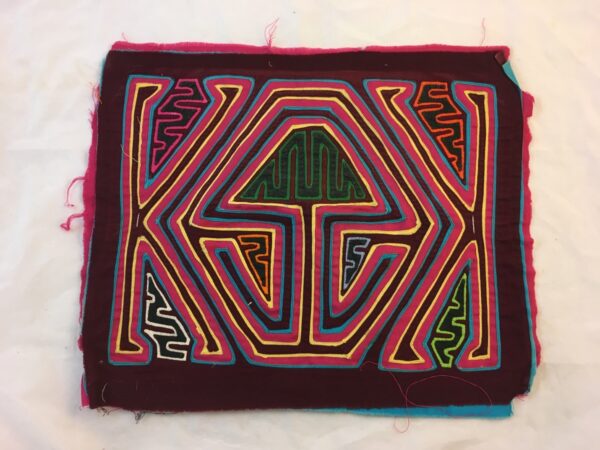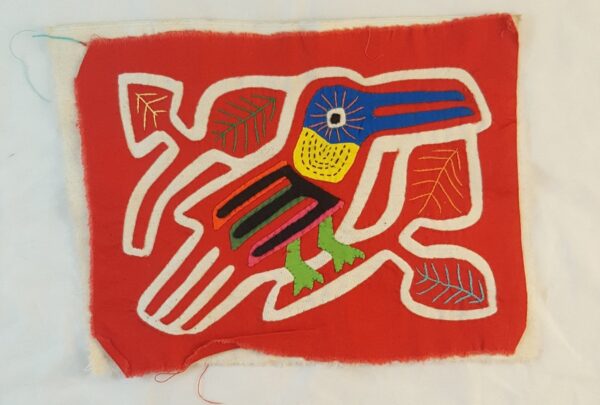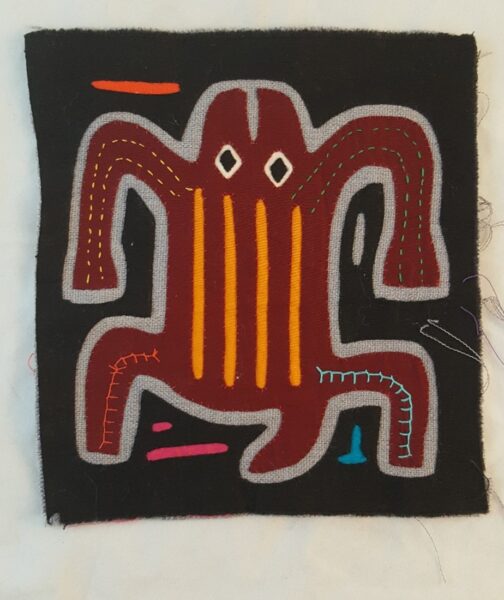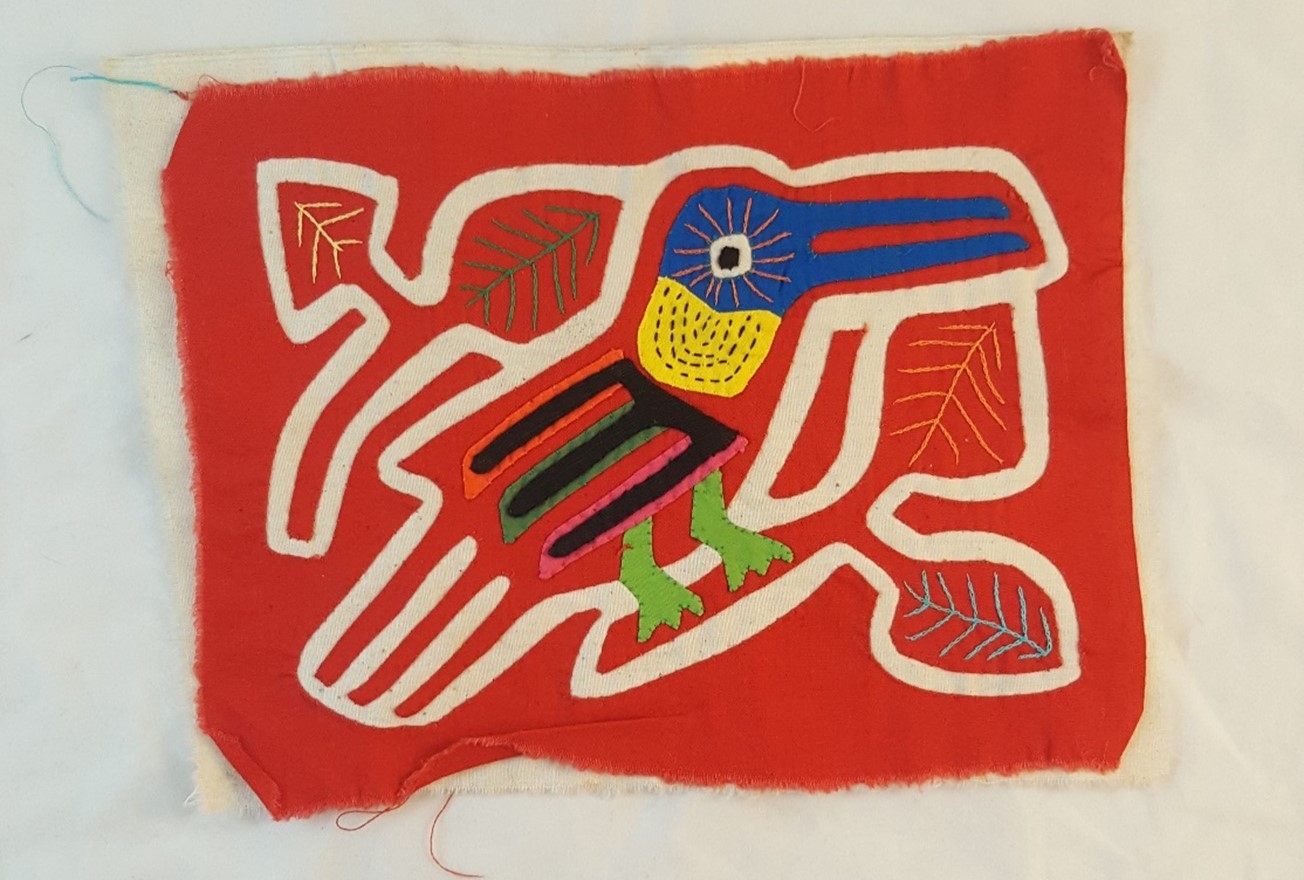Molas and molitas (“little molas”) are elaborate textiles made by the women of the Kuna culture of the San Blas territory, in what is today the country of Panama. The elaborate designs on molas are created primarily using a technique known as reverse appliqué, a painstaking process that involves stitching together several layers of cloth and then cutting designs and outlines into the layers, folding them back to show the different colors, and stitching the edges in place. The designs may be further embellished with direct appliqué, which involves stitching cut-out shapes onto the surface of the cloth, and with embroidery, to add fine details.
Mola designs were originally derived from geometric body painting. The designs were transferred onto cloth when the Kuna adopted European-style clothing; they make pairs of these cloth panels and sew them to the front and back of women’s blouses. Early mola panels were made with geometric patterns that were predominantly red and black. As colorful, imported cloth and thread became widely available, mola artisans incorporated more colors and became more creative with their designs, incorporating motifs such as animals, fish, plants, characters from Kuna legends, and objects from everyday life. While motifs such as toucans, fish, and flowers remain very popular in molas made for the tourist trade, artisans create designs using images of everything from tools and household appliances to corporate logos, and popular motifs change frequently among the molas that Kuna women make for themselves and their families.
Today the production of molas remains a woman’s artform, with grandmothers, mothers, and aunts teaching young girls how to make molas and encouraging them to wear mola blouses as an enduring symbol of pride in their culture. Traditional mola panels are also created for sale, and old molas are even recycled by being cut from blouses and sold in the tourist trade. Molitas and mola designs are also incorporated into other types of clothing as well as into a variety of objects for sale, from handbags to eyeglass cases. Molas have become so popular and beloved in recent times that they have been adopted as a symbol of national identity for the country of Panama.

Kuna culture
Early 21st century
Cotton and pigment, L. 40 cm x W. 2 mm x H. 33 cm
BFPC collection #2012.4

Kuna culture
Late 20th century
Cotton and pigment, L. 24 cm x W. 1 mm x H. 18 cm
BFPC collection #2014.25

Kuna culture
Late 20th century
Cotton and pigment, L. 16 cm x W. 1 mm x H. 17.5 cm
BFPC collection #2014.26
For more information, you may contact the researcher(s) noted in the title of this exhibit entry, or Dr. Billie Follensbee, the professor of the course, at BillieFollensbee@MissouriState.edu

